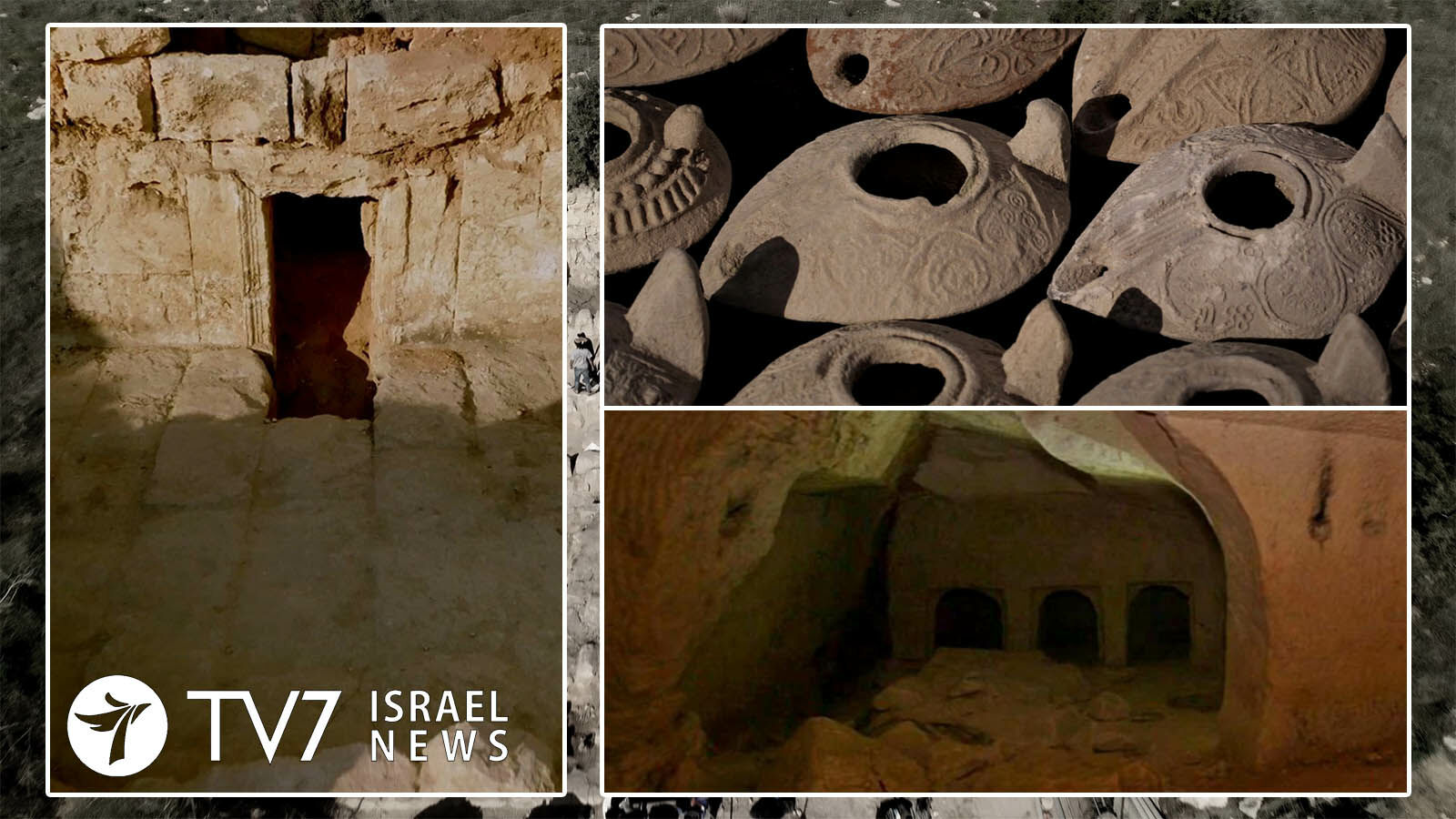Excavations of a cave reputed to be the burial place of Jesus’ midwife Salome has found evidence that it had also served as a Christian pilgrimage site and an important Jewish tomb.
By Erin Viner
The 2000-year-old Second Temple-Period burial cave designated the Salome Cave in the Lachish Forest of the Judean lowlands is one of the most impressive in Israel. The excavation was carried out as part of the Judean Kings’ Trail Project led by the Israel Antiquities Authority (IAA), the Ministry for Jerusalem and Heritage and the Jewish National Fund.
Looters first exposed the cave by breaking into it 40 years ago, after which it was excavated by archaeologists led by Professor Amos Kloner of the Antiquities Department. In accordance with Jewish burial custom, there are several chambers with multiple rock-hewn kokhim (burial niches) and broken ossuaries (stone boxes.
While the Jewish tradition of using stone ossuaries is well-known – the surprise was the later adaptation of the cave into a Christian chapel.
Engravings of crosses and dozens of Greek inscriptions on walls of the cave, located about 35 km (22 miles) southwest of Bethlehem, show the site was dedicated to the sacred Salome during the Byzantine Era. Discovery of oil lamps used by Christians and later etchings – including some in Arabic – show the cave continued to be a pilgrimage site for Christian worshippers not only through to the ninth century but even after the Muslim conquest of the region, the IAA said.
“The name Salome (or in Hebrew: Shalom or Shlomit) was a common Jewish name in the Second Temple-period and was also known in the Hasmonean and Herodian families,” said Excavation Directors of the Southern Region Nir Shimshon-Paran and Zvi Firer, according to an IAA statement.
“According to a Christian tradition, Salome was the midwife from Bethlehem, who was called to participate in the birth of Jesus. She could not believe that she was asked to deliver a virgin’s baby, and her hand became dry and was only healed when she held the baby’s cradle.”
The Book of James, among early Christian writings called the Apochrypha which are not included in the Bible, recounts that Salome, a midwife from Bethlehem, had been doubtful of the virgin birth until one of her injured arms was miraculously healed when she cradled Jesus, whom she then proclaimed as “a great king … born unto Israel.”
“Salome is a mysterious figure,” said the researchers, explaining, “The family tomb attests that its owners were a family of high status in the Judean Shefelah in the Second Temple period. The cult of Salome, sanctified in Christianity, belongs to a broader phenomenon, whereby the fifth century CE Christian pilgrims encountered and sanctified Jewish sites. The name Salome may possibly have appeared in antiquity on one of the (no-longer extant) ossuaries in the tomb, and the tradition identifying the site with Salome the midwife developed, the cave becoming venerated by Christianity.”
Work to prepare the site for public access unearthed an elaborate forecourt 350 square-metre (3,767-square-foot) forecourt with stone slab and mosaic floors said the IAA, including a row of shop stalls that are believed to have sold or rented clay lamps. Shimshon-Paran and Firer said that hundreds of the complete and broken artifacts dating back to the 8th–9th centuries AD were found, that “may have served to light up the cave, or as part of the religious ceremonies, similarly to candles distributed today at the graves of righteous figures, and in churches.”
The forecourt and the cave itself attest that the tomb once belonged to a wealthy Jewish family who had invested much effort into its preparation, including carvings on the entrances and interior chapel with “fine decorative vegetal designs, including rosettes, pomegranates and acanthus vases, characteristic Jewish features,” said the IAA, adding, “It is noteworthy that the court leading into burial caves was usually hewn out of the rock, and not elaborately built of ashlar masonry as this forecourt.”
IAA Director of the Judean Kings’ Trail Project Saar Ganor said that once the restoration and development works are completed, the forecourt and the cave will be opened to the public. “This trail, that crosses the Judean Shefelah, is the backbone of the Jewish People’s cultural heritage, and it encompasses dozens of sites from the time of the Bible, the Second Temple, the Mishnah and the Talmud,” he said, and that the excavations are “creating a meaningful deep-rooted connection for the general public between archaeology and the cultural heritage.”
IAA Director Eli Eskozido pledged the continued development of “new ways and initiatives in the coming years in order to strengthen the bond between the public and the heritage and cultural landscape.”
In addition to Salome’s Cave and the Judean Kings’ Trail, other fascinating sites in the IAA Southern Region include the Incense Trade Route and the Knights Route.
